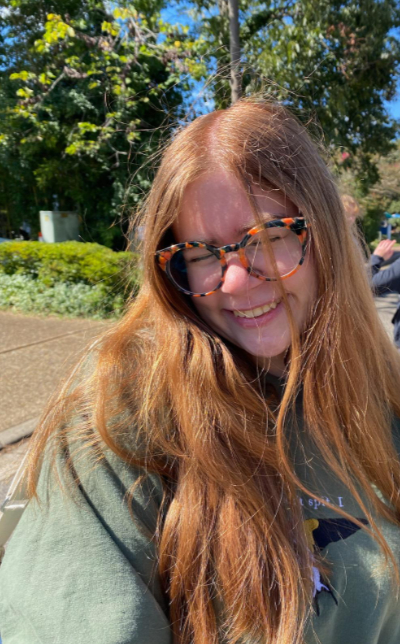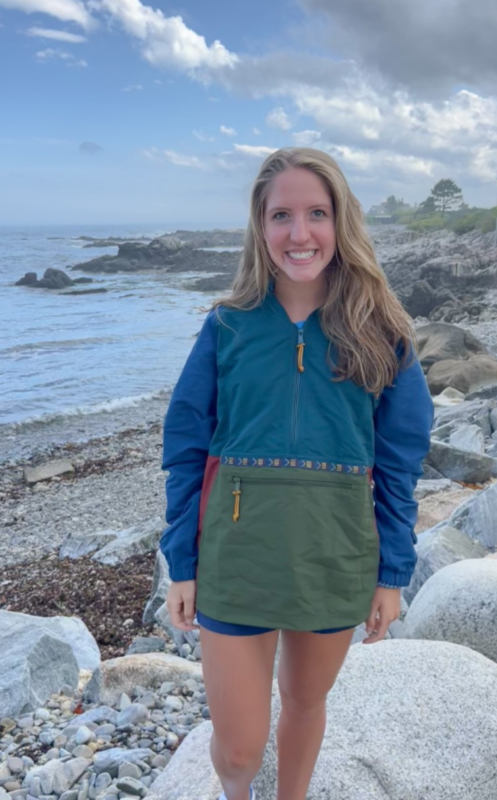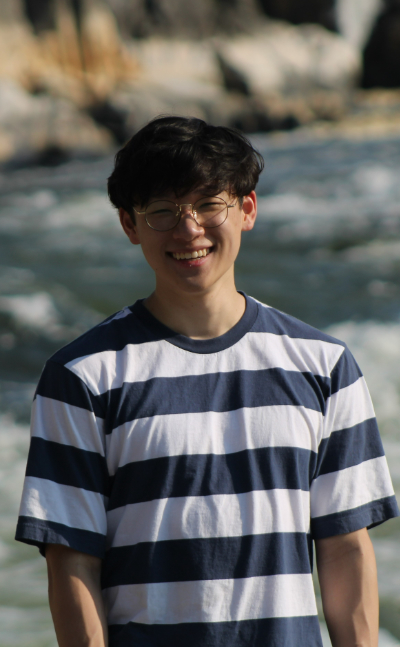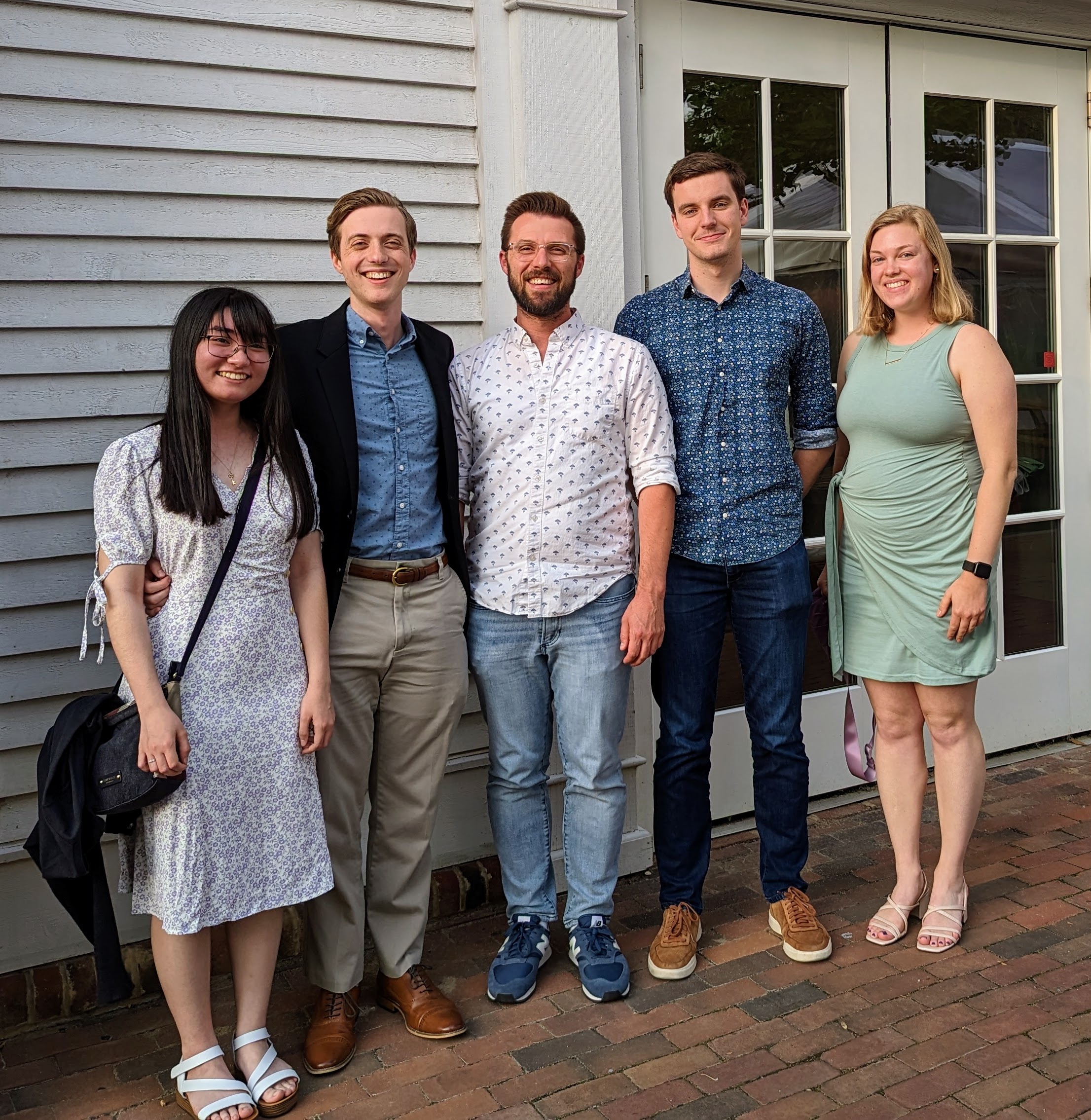
Faculty Summer Research Grant
Internal funding

Internal funding

–
American Chemical Society Petroleum Research Fund: Undergraduate New Investigator Grant
Summer stipend for undergraduate research student; focus on analysis of dyed textiles

Internal funding

–
Small Business Technology Transfer (STTR) Phase II Grant. Cooperative project between Metna Co. (Lansing, MI), Rutgers University (Newark, NJ), and William & Mary.

–
Small Business Technology Transfer (STTR) Sequential Phase II Grant. Cooperative project between Metna Co. (Lansing, MI), Rutgers University (Newark, NJ), and William & Mary.

–
United States - Israel Binational Science Foundation (BSF) Startup Grant. Cooperative project between Prof. Daphna Shimon, The Hebrew University of Jerusalem (Jerusalem, Israel), and William & Mary.





Congratulations to Jack who just got accepted to med school at the University of Virginia in Charlottesville, VA! Well deserved, Jack. Well earned.
Welcome back to campus for the semester!
Tolday marks the official start to the pigment/DNP project! This project is sponsored by the US-Israeli Binational Science Foundation and in is done in collaboration with the Shimon lab at the Hebrew University in Jerusalem. Lyndi and Gillian will be the first to work on this project this semester.
Jacob was selected for a summer internship in Livermore, California! He will work for 10 weeks at the Materials and Chemistry Institute at Lawrence Livermore National Lab, bringing his experience with single-sided magnetic resonance to the west coast. Congratulations, Jacob!
Tyler was accepted to create and direct a short-term study abroad program in Heidelberg, Germany! His course, Bio/Molecular Imaging, held in January 2023, will focus on NMR and MRI as tools to study anatomical and biomolecular structure. He’s long wanted to take students abroad and is thrilled for this opportunity!
Gillian has accepted to the Eshelman School of Pharmacy at UNC Chapel Hill starting this fall! Congratulations, Gillian, and go Tar Heels!
Sam will work in a lab at Johns Hopkins this summer studying diabetic neuropathy, with a focus on the skin microenvironment. Congrats, Sam!
Master’s student Lyndi Kiple received the Kranbuehl-Thompson Graduate Fellowship. From the newsletter:
Lyndi Kiple studies molecular interactions between pigments and binder in acrylic paints to inform scientists, artists, and conservators about the physical and chemical nature of paint. She primarily uses single-sided nuclear magnetic resonance: a non-invasive, non-destructive, and portable technique that is well-suited to studying painted surfaces and precious objects. Lyndi’s goal at William & Mary is to identify and describe these molecular interactions at different spatial scales so scientists can design future experiments and predict treatments for conserving painted materials. In the future, Lyndi plans to work in analysis of art and objects of cultural significance. Her skills will help preserve art and heritage in museums and other settings.
Lyndi was selected for the graduate fellowship because of her academic aptitude, organization, and willingness to learn new techniques, methods, and instruments to answer her research questions. In addition, Lyndi excels at scientific communication with a range of audiences and actively seeks opportunities to practice and improve her communication skills.
Congratulations, Lyndi!
Lyndi gave a wonderful presentation today, “Understading the Chemistry of Paint for Art Conservation.” Her talk was part of the Emerging Scholars Series, a partnership between William & Mary and the Williamsburg Regional Library. She connected strongly and clearly with the audience who brought excellent and relevant questions up at the end. Congratulations on a successful talk, Lyndi!

The Meldrum Lab honors several graduates this spring: Lyndi is receiving her MS degree, while Andrew, Tyler, Joyce, and Iggy (Dec) are receiving BS degrees. Congratulations, all!
Olivia and Jacob are working at the Meldrum Lab this summer. Olivia will be wrapping up some epoxy kinetics work and setting up DNP experiments, while Jacob will work on his honors thesis project: using molecular dynamics simulations to model relaxation behavior near interfaces.
The Meldrum Lab has published two new papers this spring, both featuring student authors! The first, Automated optimization of spatial resolution for single-sided NMR, addresses how we can improve spatial resolution of MR measurements by co-aligning magnet and sample. The second, Characterization of molecular environments and chemical exchange in acrylic paints via single-sided NMR, explores the relationship between pigment, binder, and chemical exchange in acrylic paints. Congratulations!

Sam received a fellowship to do research at the Weizmann Institute in Rehovot, Israel over the summer. There, he will be working on dissolution DNP for signal amplification of small organic molecules. Congratulations, Sam!
Kate Hoving, Associate Director of International Communications for the Reves Center for International Studies at W&M, wrote a news article about the Study Abroad program that Tyler led in Heidelberg, Germany in January. It features an interview between Tyler and program participant (and group member) Sam Rubin!

Four members of the Meldrum Group–Olivia, Shinjer, Sam, and Jacob–went with Tyler to the Southeast Regional Meeting of the American Chemical Society (SERMACS) in Durham, NC. They all presented posters on their current research projects. One conference goer was somewhat incredulous that “…they are only undergrads? They present[ed] so well!” In fact, they did.
Tyler was selected to receive a 2023 Henry Dreyfus Teacher-Scholar award! This national award was granted to eight recipients this year and comes with unrestricted research funding for a five year period. See the press release here.
We see things because light bounces off of things and comes to us. But what is light really? Light is a wave, and properties of the wave tell us about the color and brightness of the light. (Make waves using a jumprope.) Sometimes, the colors that we see are made up of lots of other colors. (Use diffraction gratings to see rainbow. Then, look at a hydrogen lamp to see that there are only lines of light, not a regular rainbow.) In addition to what we can see, there are many different colors we cannot see. Like x-rays, infrared (show the light from a TV remote using the cameras on cell phones), and radio. There is also “black light,” also called ultraviolet light. It can make things glow (show laundry detergent under black light).
A brief introduction to the idea of conservation of energy, both in the thermodynamic sense and in the saving energy sense.
An evening lecture on thermodynamics and cooking for adults.
Leaves changing colors turn into an overview of chromatography, candy pumpkins become atoms in molecular modeling kits, and kids practice good lab skills with lab notebook mad libs (pdf)! Two hour-long presentations on chemistry and its connection to fall and Thanksgiving, together with two hours of open activities for kids ages five and up.
Schröder, L.; Meldrum, T.; Smith, M.; Lowery, T. J.; Wemmer, D. E.; Pines, A. Phys. Rev. Lett. 2008, 100, 257603(4).
Schröder, L.; Chavez, L.; Meldrum, T.; Smith, M.; Lowery, T. J.; Wemmer, D. E.; Pines, A. Angew. Chem. Int. Ed. 2008, 47, 4316–4320. (Frontispiece.)
Schröder, L.; Meldrum, T.; Smith, M.; Schilling, F.; Denger, P.; Zapf, S.; Wemmer, D. E.; Pines, A. September 7–12, 2009, Munich, Germany. IFMBE Proc. 2009, 25/13, 176–179.
Meldrum, T.; Seim, K. L.; Bajaj, V. S.; Palaniappan, K. K.; Wu, W.; Francis, M. B.; Wemmer, D. E.; Pines, A. J. Am. Chem. Soc. 2010, 132, 5936–5937.
Meldrum, T.; Schröder, L.; Denger, P.; Wemmer, D. E.; Pines, A. J. Magn. Reson. 2010, 205, 242–246. (Cover article.)
Meldrum, T.; Bajaj, V. S.; Wemmer, D. E.; Pines, A. J. Magn. Reson. 2011, 13, 14–21.
Fukunaga, K.; Meldrum, T.; Zia, W.; Ohno, M.; Fuchida, T.; Blumich, B. IEEE 2013, 1, 81–88.
Garimella, P. D.; Meldrum, T.; Witus, L. S.; Smith, M.; Bajaj, V S.; Wemmer, D. E.; Francis, M. B.; Pines, A. J. Am. Chem. Soc. 2014, 136, 164–168.
Fife, G.; Stabik, B.; Kelley, A. E.; King, J. N.; Blumich, B.; Hoppenbrouwers, R.; Meldrum, T. Magn. Reson. Chem. 2014, 53, 58–63.
King, J. N.; Lee, V. J.; Ahola, S.; Telkki, V-V.; Meldrum, T. Angew. Chemie Int. Ed. 2016, 55, 5040–5043.
Fife, G.; Stabik, B.; Blümich, B.; Hoppenbrouwers, R.; Meldrum, T. ; In The Noninvasive Analysis of Painted Surfaces: Scientific Impact and Conservation Practice; Nevin, A. and Doherty, T., Eds. Smithsonian Contribution to Museum Conservation 2016, 5(5), 15–23.
Udell, N. A.; Hodgkins, R. E.; Berrie, B. H.; Meldrum, T. Microchem. J. 2017, 133, 31–36.
Rehorn, C.; Kehlet, C.; Del Federico, E.; Zia, W.; Meldrum, T.; Blümich, B. Strain 2017, e12254.
Brass, M.; Morin, F.; Meldrum, T. Magnetochemistry 2018, 4(1), 8.
King, J. N.; Fallorina, A.; Yu, J.; Zhang, G.; Telkki, V.-V.; Hilty, C; Meldrum, T. Chem. Sci. 2018, 9, 6143–6149.
Ma, X.; Beltran, V.; Ramer, G.; Pavlidis, G.; Parkinson, D. Y.; Thoury, M.; Meldrum, T.; Centrone, A.; Berrie, B. Angew. Chem. Int. Ed. 2019, 58, 11652–11656.
Kelley, M.; Abdol, N.; Soroushian, P.; Keating, K.; Balachandra, A. M.; Meldrum, T. J. Polym. Sci. 2020, 58, 616–623.
Rooney, M. T.; Meldrum, T. Magn. Reson. Chem. 2020, 58(9), 880–888.
Lyndi Kiple, Jack Ballenger, Kristina Keating, Anagi Balachandra, Tyler Meldrum. Magn. Reson. Chem. 2023, 61(7), 418–426.
Lyndi Kiple, Tyler Lee, Gillian Zavaglia, Tyler Meldrum. Prog. Org. Coat. 2023, 183, 107770.
A three-week study abroad course in Germany for STEM students. This course will be an introduction to biomolecular imaging with emphasis on NMR and MRI.